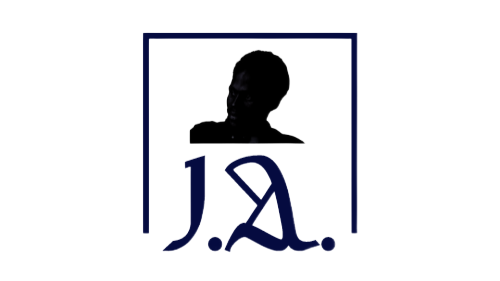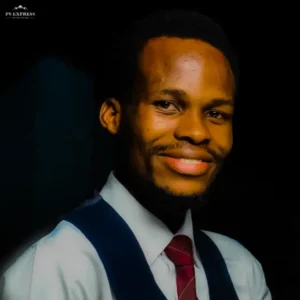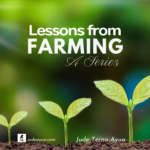In Peter L. Berger’s (1990) “Religion and World Construction”[1], the author explains the ‘relationship between religion and world-building’, stating that “every human society is an enterprise of world-building” and “religion occupies a distinctive place in this enterprise”[2]. Berger states that society is a human product, and that man is a product of the society[3]. He analyzes the fundamental dialectic process, the three stages of society: externalization, objectivation, and internalization[4]. The externalization stage, explains Berger, is the process through which society is a human product; the objectivation is the stage that society as a human product becomes a reality; and the internalization stage is where man is a product of the society[5].
In my commentary, I focus on the process of how an individual becomes a product of society as explained by Berger, using the case study of Joan Wallach Scott’s autobiography in Becoming Historians (Banner & Gillis 2009)[6], of how she was inspired by her parents to become a historian. Specifically, I comment on the pressure of balancing one’s personal passions or desires with the expectations of society, and the outcome of this, as demonstrated by Scott.
Berger explains that a human is an “unfinished” being[7], who through the externalization process, makes for himself a world, and in the process, also produces himself (in the world)[8]. This happens by the ongoing interaction between human beings in society—human activities. By this explanation, this stage marks the first point of contact of a human being with the world. The society created by human activity becomes a reality through the process of objectivation and “provides a world for man to inhabit”[9]. Here, Berger talks about the objectivity of society and the subjectivity of the individual human, which makes him imagine himself in different contexts, seeing society as a distinct reality outside of himself. This is the stage where the individual has attained a certain level of self-consciousness, capable of making certain choices that may go against the culture of his society, which the latter tries to coerce by means of “social control”[10]. To achieve this, socialization, which according to Berger, is the coercive tool, must be able to maintain an objective/subjective symmetry[11]. Berger observes that this process is a collective activity, an individual’s interaction with the significant other, which gives them a sense of belonging. Separation from others creates a challenge for the individual. It is, therefore, internalization—the appropriation of the objective reality that produces the individual—that completes the larger dialectic process and keeps the individual as an integral part of society[12].
In the chapter, “Finding Critical History” in Becoming Historians, Scott narrates her own story of how her parents’ profession influenced her becoming a historian. She writes, “It might be said that since my parents were high school history teachers it was inevitable that I would become a historian…From my mother’s example I learned that teaching was a form of activism…” (pp. 26-27)[13]. Another influence was the socio-economic condition at the time, which had made her father study history, because he would not have been employed as an engineer, being a Jew: “that he wanted to instill in me”, she explained. In her career also, she was influenced by other historians including Jacques Derrida and Michel Foucault[14]. This illustrates Berger’s dialectic process of an individual becoming a product of society.
Furthermore, as Scott grew into her own society, however, she struggled between accomplishing her personal ambition and living up to the expectations of society. The process of objectivation played out in Scott’s story in two ways. First, her parents influenced her career choice, however, she added her personal motivation—politics to it and attained a higher feat than they did. Second, by trying to fit into her career role as a historian, a field that was dominated by men at the time, she challenged the norm through activism, and thereby developed a novel approach to studying history, which she theorized as critical history[15]. One crucial point to note is that Scott did not achieve this in isolation, but as Berger’s theory argues that the dialectic process is a collective activity, she worked with colleagues, both historians and political scholars[16]. Finally, in line with Berger’s theory, Scott also became a “co-producer”[17] in her field, thereby adding to the body of knowledge.
[1] Berger, Peter L. The Sacred Canopy: Elements of a Sociological Theory of Religion. Anchor Books, 1990. pp. 1-28
[2] Berger, 1990. p. 3
[3] Berger, 1990. p. 3
[4] Berger, 1990. p. 5
[5] Berger, 1990. p. 5
[6] Banner, James M., and John R. Gillis. Becoming Historians. University of Chicago Press, 2009. pp. 27-53
[7] Berger, 1990. p. 5
[8] Berger, 1990. p. 6
[9] Berger, 1990. pp. 10-12
[10] Berger, 1990. p. 11
[11] Berger, 1990. p. 15
[12] Berger, 1990. pp. 17-18
[13] Banner & Gillis. 2009. pp. 26-27
[14] Banner & Gillis. 2009. p. 45
[15] Banner & Gillis. 2009. p. 45
[16] Banner & Gillis. 2009. pp. 38-43
[17] Berger, 1990. p. 18







